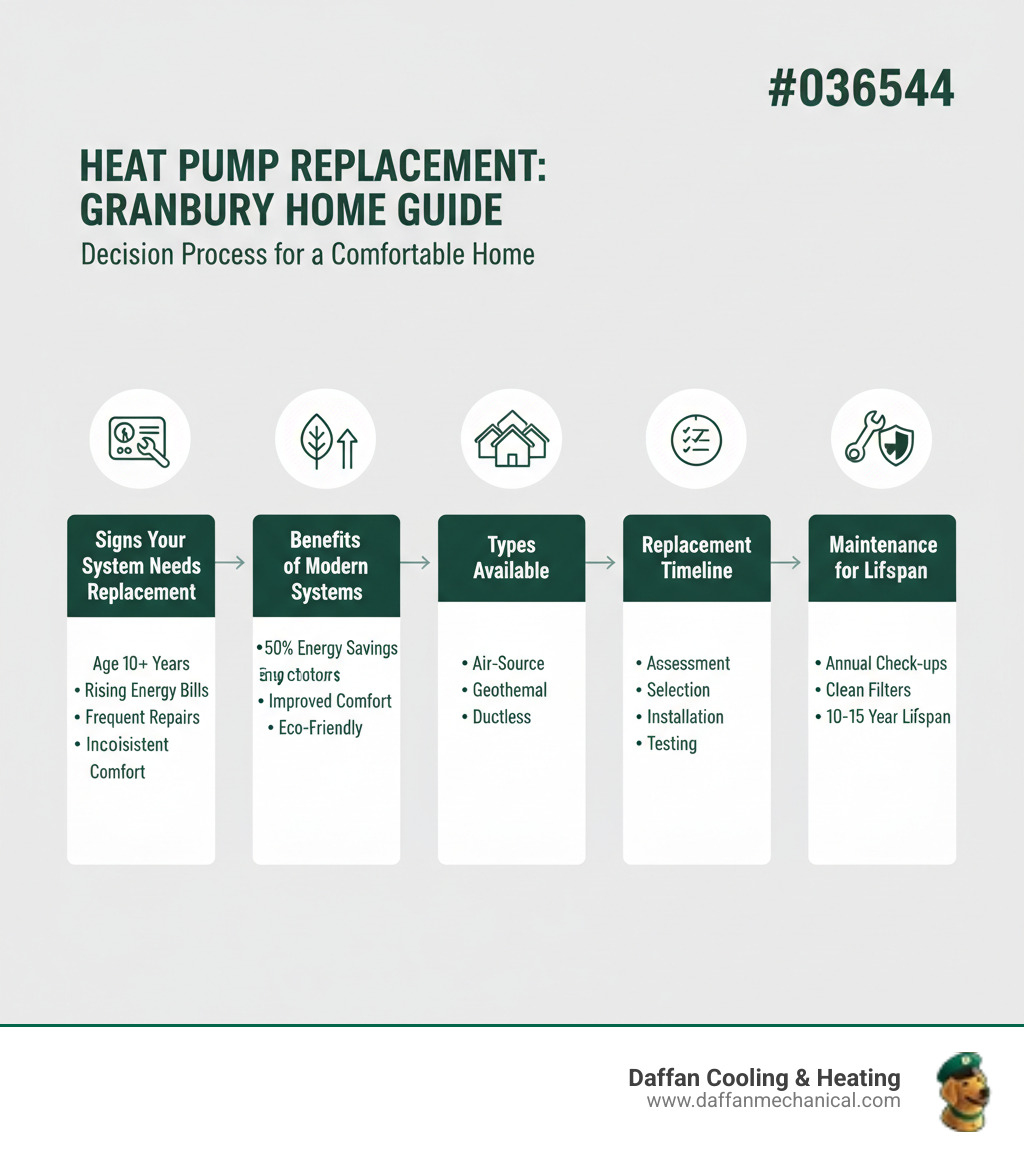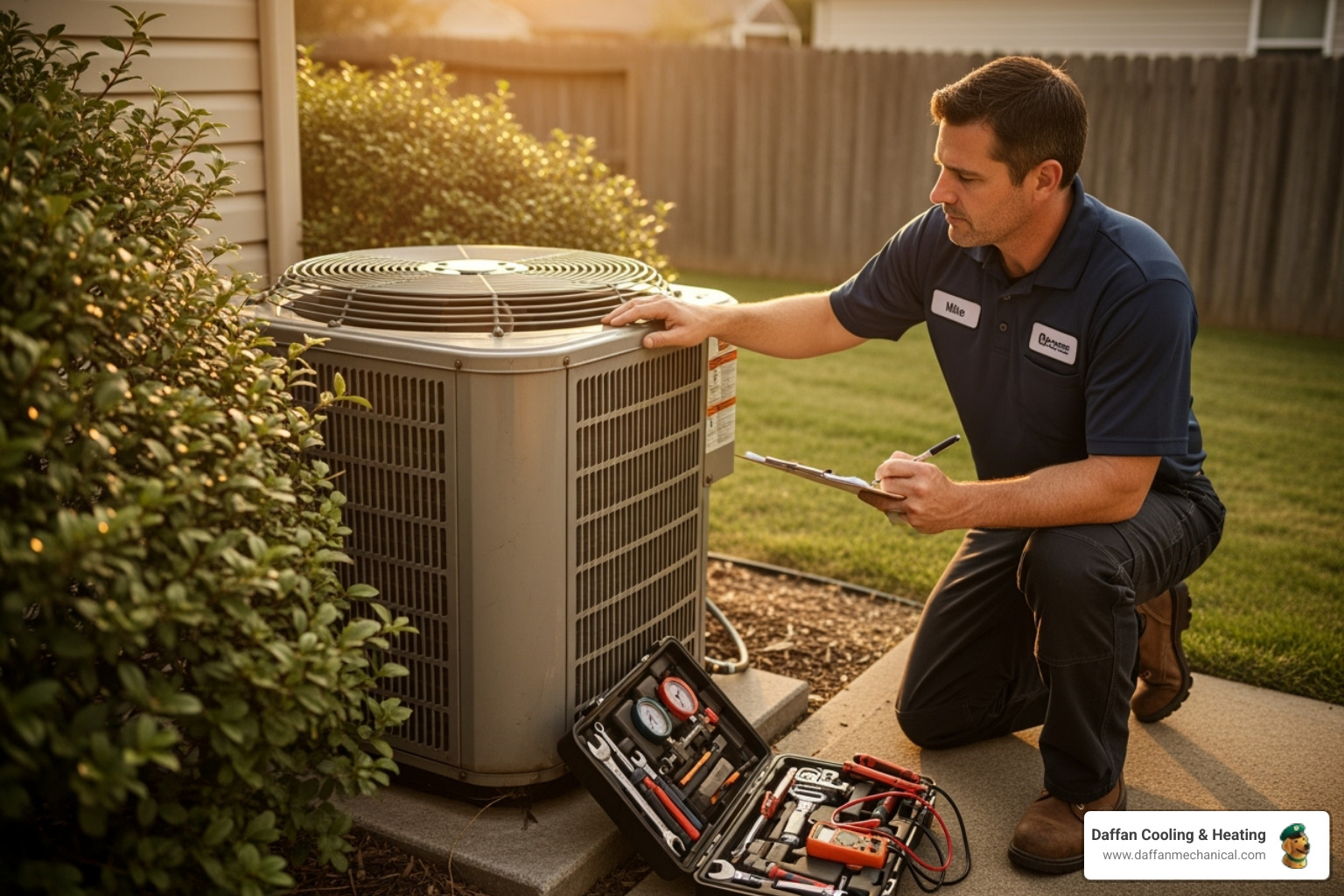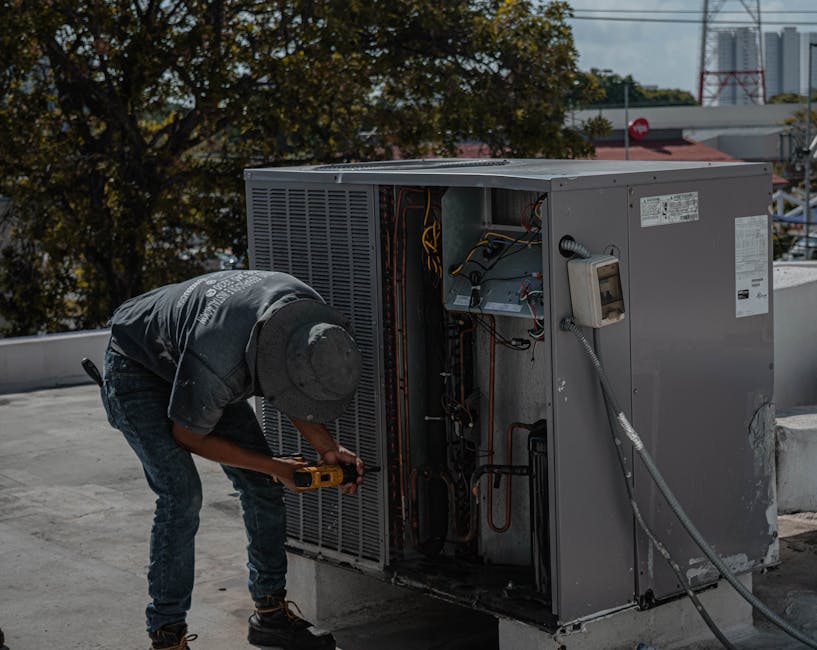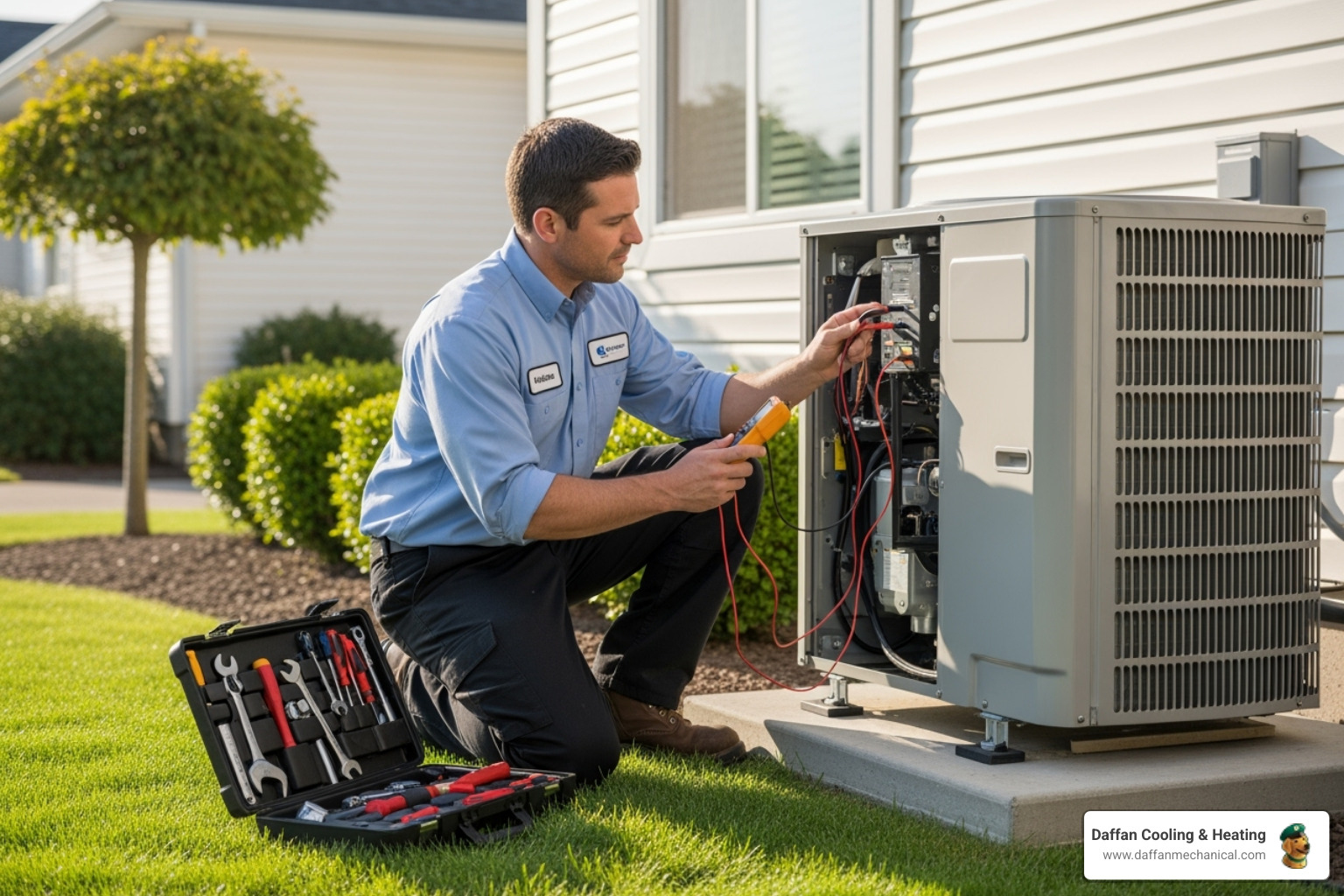Why Your Granbury Home Deserves a Modern Heat Pump
Heat pump replacement granbury tx is essential when your system is over 10 years old, causing high energy bills, or requiring frequent repairs. Modern heat pumps can reduce your electricity use by approximately 50% compared to older systems, while providing consistent year-round comfort in Granbury’s unique climate of hot summers and mild winters.
When to replace your heat pump:
- Age: System is 10+ years old
- Cost: Rising energy bills or frequent costly repairs
- Performance: Inconsistent heating/cooling or strange noises
- Efficiency: New models offer significantly better SEER ratings
Granbury homeowners face a unique challenge. Our climate demands both reliable cooling during scorching Texas summers and dependable heating when winter arrives. A failing heat pump means discomfort when you need it least—and unexpected repair bills that add up fast.
The good news? Today’s heat pumps are game-changers. They’re dramatically more efficient than models from even 10 years ago. We’re talking about technology that transfers heat rather than generates it, cutting your heating costs in half while keeping every room comfortable.
If your current system is struggling, making odd noises, or driving up your utility bills, you’re not alone. Most heat pumps last 10-15 years with proper care. After that, replacement often makes more financial sense than continued repairs.
This guide walks you through everything you need to know about heat pump replacement in Granbury—from recognizing the warning signs to choosing the right system for your home.
Is It Time for a Change? Signs Your Granbury Heat Pump Needs Replacing
Your heat pump has been working hard for years, keeping your family comfortable through sweltering Texas summers and chilly winter nights. But like any hardworking machine, it won’t last forever. The question is: how do you know when it’s time to say goodbye?
The truth is, your system gives you plenty of warning signs. Some are obvious—like those mysterious banging sounds at 2 AM. Others are more subtle, like gradually creeping energy bills or rooms that never quite feel comfortable. Let’s walk through what to watch for, so you’re never caught off guard by a complete breakdown in the middle of July.
Your Heat Pump’s Age and Performance
Here’s a simple rule of thumb: if your heat pump is celebrating its tenth birthday, it’s time to start paying closer attention. Most heat pumps have a lifespan of 10-15 years, even with regular maintenance and care.
Age matters because heat pumps don’t just suddenly stop working one day. Instead, they slowly lose efficiency as components wear down. Your 10-year-old system might be working twice as hard to deliver the same comfort it provided when it was new. And when your system works harder, your electricity meter spins faster—which explains those rising energy bills you’ve been noticing.
There’s another factor to consider with older units: outdated refrigerant technology. Many older heat pumps use refrigerants that are being phased out due to environmental regulations. This makes repairs increasingly expensive and sometimes even impossible to complete.
If your system is over a decade old and you’re seeing higher utility bills or needing frequent repairs, replacement often makes more financial sense than limping along with an aging unit.
Telltale Sounds and Inconsistent Comfort
Your heat pump talks to you—not in words, but through sounds and performance. Learning to listen can save you from an emergency breakdown.
Strange noises are never a good sign. Grinding sounds usually mean bearings are wearing out. Squealing often indicates belt problems or motor issues. Banging sounds? That’s typically loose or broken components rattling around inside your unit. These aren’t just annoying—they’re warning signals that something serious is failing.
But sometimes the problems are quieter. Have you noticed that your bedroom is freezing while the living room feels like a sauna? That’s inconsistent heating and cooling, and it means your system can’t effectively distribute comfort throughout your home anymore.
Weak airflow from your vents is another red flag. Your heat pump might be running constantly but never quite reaching the temperature you’ve set on the thermostat. Or maybe it’s short cycling—turning on and off in quick bursts without ever properly heating or cooling your home. This constant starting and stopping puts tremendous stress on the system and drives up your energy costs.
Poor indoor air quality can also signal a failing heat pump. If you’re noticing more dust, increased humidity in summer, or stuffiness throughout your home, your system might not be filtering and conditioning air properly anymore.
When you’re experiencing these issues with heat pump replacement granbury tx on your mind, it’s smart to get a professional evaluation. Sometimes a repair can solve the problem. But often, especially with older systems showing multiple symptoms, replacement is the better investment for your comfort and your wallet.
The Golden Benefits of a Modern Heat Pump
Let’s talk about something exciting—the real-world advantages you’ll experience when you invest in a heat pump replacement granbury tx. This isn’t just about swapping out an old unit for a new one. It’s about changing how comfortable your home feels while watching your energy bills drop month after month.
Significant Energy and Cost Savings
Here’s where modern heat pumps really get impressive. Unlike traditional heating systems that burn fuel or use electric coils to create warmth, heat pumps work smarter, not harder. They simply move heat from one place to another—extracting warmth from outside air during winter and reversing the process in summer to cool your home.
This clever heat transfer process means a new heat pump can reduce your electricity use for heating by approximately 50% compared to older electric resistance systems like furnaces or baseboard heaters. Yes, you read that right—half the energy consumption! For many Granbury homeowners, this translates to hundreds of dollars saved annually on utility bills.
The secret lies in those efficiency ratings you’ll see when shopping for a new system. The SEER (Seasonal Energy Efficiency Ratio) tells you how well the unit cools, while HSPF (Heating Seasonal Performance Factor) measures heating efficiency. According to the U.S. Department of Energy’s Energy Star program, higher numbers mean better performance and lower operating costs. Many of our customers find that their energy savings help offset the installation investment within just five to ten years, making this one of the smartest home improvements you can make.
Improved Year-Round Comfort in Texas
Granbury’s weather keeps us on our toes—scorching summers that seem to stretch forever, followed by those surprisingly chilly winter nights. A modern heat pump handles both seasons beautifully, giving you reliable comfort no matter what Mother Nature throws at you.
During our brutal Texas summers, today’s heat pumps don’t just cool your home—they excel at removing humidity too. That means no more sticky, clammy air clinging to your skin. Your home feels genuinely comfortable, not just cold. When winter rolls around, even during those mild but chilly stretches, your heat pump delivers consistent, even warmth throughout every room. No more bundling up in blankets because the bedroom never quite gets warm enough!
Beyond comfort and savings, you’ll appreciate the quieter operation of newer models. Gone are the days of that constant rattling or humming from a struggling system. Modern heat pumps run whisper-quiet, so you can enjoy your perfectly conditioned home in peace.
And here’s a bonus that feels good: heat pumps are genuinely eco-friendly. By using one efficient system for both heating and cooling, you’re reducing your home’s carbon footprint and doing your part for the environment. It’s a win for your wallet, your comfort, and the planet.
Your Guide to Heat Pump Replacement in Granbury TX
Thinking about heat pump replacement granbury tx? We understand it can feel overwhelming. There are different systems to choose from, costs to consider, and a whole process to steer. But don’t worry—we’re here to walk you through everything you need to know, so you can make the best decision for your home and family.
Understanding the Cost of a New System
Let’s talk about the investment. We know that understanding what goes into the cost of a new heat pump is important for planning your budget. The truth is, there’s no single price tag that fits every home. Several factors come into play, and we believe in being completely transparent about what influences your final cost.
First, there’s the heat pump type itself. Different systems have different price ranges, which we’ll explore in just a moment. The system size and capacity is another big factor. Your home’s square footage and specific heating and cooling requirements determine how powerful your new unit needs to be. We always conduct a thorough home assessment to get this right—an undersized heat pump will leave you uncomfortable, while an oversized one wastes energy by cycling on and off too frequently.
Efficiency ratings matter, too. Units with higher SEER (Seasonal Energy Efficiency Ratio) and HSPF (Heating Seasonal Performance Factor) ratings cost more upfront, but they deliver greater savings on your monthly utility bills. It’s really about balancing what you invest today with what you’ll save over the next decade or more.
Your home’s ductwork condition can also impact the overall investment. If your existing ducts are old, leaky, or not properly sized, they might need repairs or sealing to ensure your new, efficient heat pump can deliver that perfectly conditioned air to every room. We’ll inspect your ductwork as part of our assessment.
The installation complexity varies from home to home. Factors like where the unit will be located, whether electrical upgrades are needed, or any modifications required to accommodate the new system all affect labor costs. Finally, different brands and features come with varying price points, warranties, and technologies.
Here’s what we want you to remember: while heat pumps may have higher initial installation costs compared to traditional systems, the significant savings on your annual energy bills often make up for this difference within five to ten years. It’s an investment that pays you back.
Types of Heat Pumps for Your Home
Now for the exciting part—choosing the right heat pump for your Granbury home! There are several excellent options available, each with unique advantages. Let’s break them down so you can see which one might be the perfect fit.
Air-source heat pumps are the most common and typically the most affordable option. These systems transfer heat between your home and the outdoor air. They’re incredibly efficient in our Granbury climate, working beautifully through both our hot summers and mild winters. Most homes we work with choose air-source systems because they offer excellent performance at a reasonable price point.
Geothermal heat pumps (also called ground-source heat pumps) are the most efficient option available. Instead of exchanging heat with the outdoor air, these systems use the stable temperature of the earth below your property. They’re remarkably efficient and can last even longer than air-source systems. The trade-off? They require more extensive installation, including underground piping, which means a higher upfront investment. But if you’re planning to stay in your home long-term, the energy savings can be substantial.
Ductless mini-split heat pumps are perfect for homes without existing ductwork or for additions and specific rooms that need their own climate control. These systems consist of an outdoor unit connected to one or more indoor air handlers mounted on your walls. They’re incredibly flexible and efficient, giving you zone-by-zone temperature control. Many homeowners love being able to keep different rooms at different temperatures.
Dual-fuel systems combine a heat pump with a backup furnace (typically gas or propane). The heat pump handles most of your heating needs efficiently, but when temperatures drop significantly (which isn’t often here in Texas), the system automatically switches to the furnace. This gives you the best of both worlds—efficiency most of the time, with reliable backup heat during those rare cold snaps.
We’ll help you evaluate which type makes the most sense for your specific home, budget, and comfort goals. There’s no one-size-fits-all answer, and that’s okay!
The Replacement Process: What to Expect
Wondering what actually happens during a heat pump replacement granbury tx? Let’s walk through it together, so you know exactly what to expect.
Everything starts with a home assessment. One of our experienced technicians will visit your home to evaluate your current system, measure your space, assess your ductwork, and discuss your comfort preferences and budget. This isn’t a quick walk-through—we take the time to understand your home’s unique needs.
Next comes system selection. Based on our assessment, we’ll recommend the best heat pump options for your situation. We’ll explain the pros and cons of each, answer all your questions, and help you choose the system that’s right for you. No pressure, no sales tactics—just honest guidance.
When installation day arrives, we begin with old unit removal. We carefully disconnect and remove your old heat pump, taking care to protect your property throughout the process. Then comes new unit installation. Our skilled technicians install your new heat pump according to manufacturer specifications and industry best practices. This includes setting the outdoor unit, connecting refrigerant lines, and ensuring proper electrical connections.
We also perform a thorough ductwork inspection. Even if your ducts don’t need major work, we’ll check for any issues and make sure everything is sealed and working efficiently. Finally, we move to system testing and calibration. We don’t just install your new heat pump and leave—we test every function, calibrate the system for optimal performance, and make sure everything is working perfectly.
The typical timeline for a heat pump replacement is usually one to two days for most homes, though more complex installations might take a bit longer. We’ll give you a clear timeline before we start, and we’ll keep you informed every step of the way.
At Daffan Cooling & Heating, we’re committed to making this process as smooth and stress-free as possible. Your comfort is our priority, and we stand behind every installation we do.









